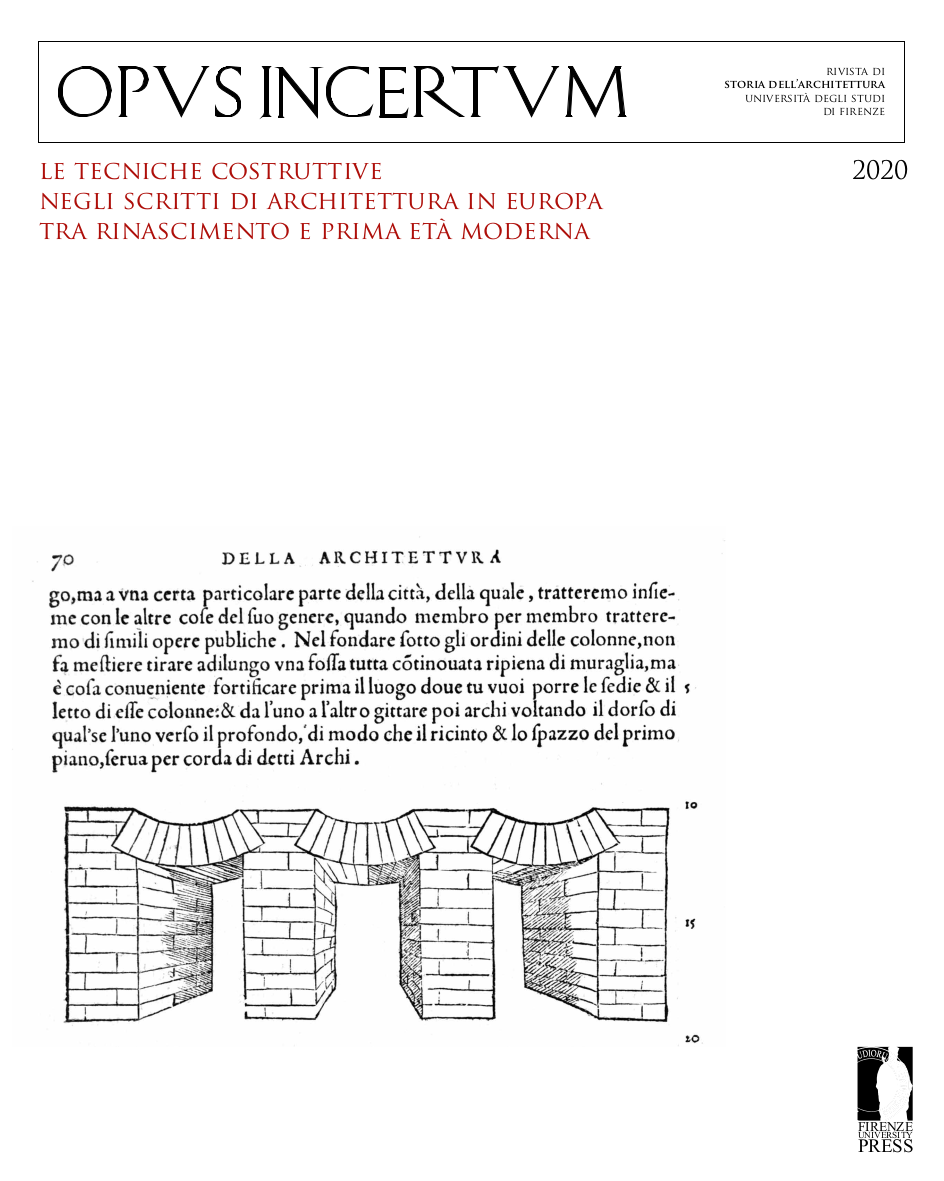“Litterarum plane rudis sed ingenii acumine adeo praestans”: impalcati per la manutenzione dell’architettura nella Roma settecentesca tra pratica artigianale, sperimentazione tecnica e codifica teorica
Published 2020-12-11
Keywords
- scaffolding,
- restoration,
- construction site,
- carpentry,
- architectural theory
- maintenance practices ...More
How to Cite
Abstract
Renaissance and Baroque building machines and construction techniques have been widely explored in the scientific literature, but scaffoldings for ordinary and extraordinary maintenance remain less well-documented, and were rarely part of architectural treatises. This is because on the building sites of the early modern age the construction of scaffolding was entrusted to the experience of craftsmen like bricklayers and carpenters. Nicola Zabaglia (1667-1750) was a master carpenter of the Fabbrica of St. Peter’s and, exceptionally, his astonishing inventions and those of his successors were considered virtuoso examples of operational empiricism and were included in the main European treatises on construction up until the early 20th century. Their long-lasting fortune shows that the scientific method did not make the empirical approach obsolete, but a gradual incorporation of theoretical precepts sanctioned the successful qualitative transition in the relationship between theory and practice even on the construction site.



